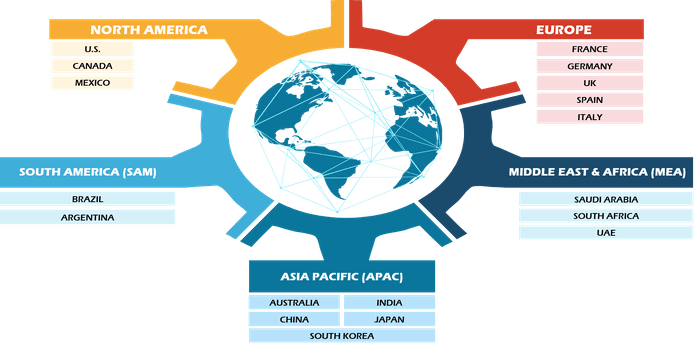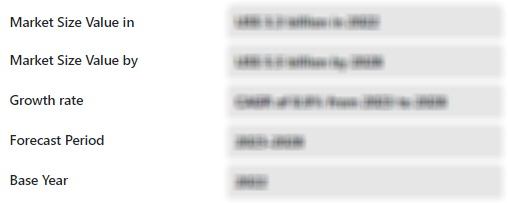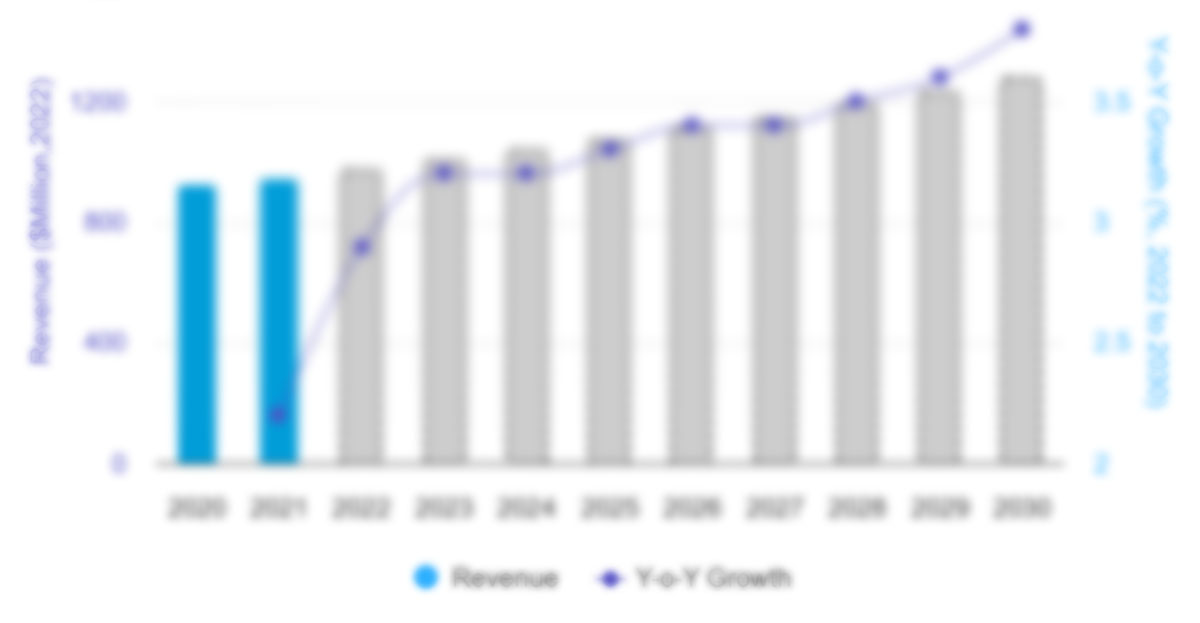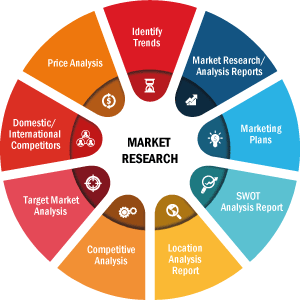The Granulocyte-Macrophage Colony-Stimulating Factor Market is expected to register a CAGR of 10.4% from 2025 to 2031, with a market size expanding from US$ XX million in 2024 to US$ XX Million by 2031.
The report is segmented By Route of Administration (Intravenous Infusion), Application (Fungal Infections, Cut-Burn Wounds), End-User (Hospital, Clinics, Surgical Centre). The global analysis is further broken-down at regional level and major countries. The Report Offers the Value in USD for the above analysis and segments.
Purpose of the ReportThe report Granulocyte-Macrophage Colony-Stimulating Factor Market by The Insight Partners aims to describe the present landscape and future growth, top driving factors, challenges, and opportunities. This will provide insights to various business stakeholders, such as:
- Technology Providers/Manufacturers: To understand the evolving market dynamics and know the potential growth opportunities, enabling them to make informed strategic decisions.
- Investors: To conduct a comprehensive trend analysis regarding the market growth rate, market financial projections, and opportunities that exist across the value chain.
- Regulatory bodies: To regulate policies and police activities in the market with the aim of minimizing abuse, preserving investor trust and confidence, and upholding the integrity and stability of the market.
Granulocyte-Macrophage Colony-Stimulating Factor Market Segmentation
Route of Administration- Intravenous Infusion
- Fungal Infections
- Cut-Burn Wounds
- Hospital
- Clinics
- Surgical Centre
Strategic Insights
Granulocyte-Macrophage Colony-Stimulating Factor Market Growth Drivers- Increase in Cancer Treatments: Granulocyte macrophage colony-stimulating factor (GM-CSF) is increasingly used in oncology treatments to enhance the production of white blood cells and improve immune response. As cancer rates rise globally and immunotherapies expand, the demand for GM-CSF to manage treatment side effects is growing, driving the market.
- Rising Prevalence of Autoimmune Diseases: The growing incidence of autoimmune diseases, such as rheumatoid arthritis and lupus, is a key driver for GM-CSF usage. GM-CSF is beneficial in managing immune system responses, leading to an increased demand for GM-CSF therapies in autoimmune disease treatments.
- Advancements in Stem Cell Transplants: GM-CSF is used in stem cell transplantation to boost the immune system and promote the regeneration of blood cells. As the adoption of stem cell transplants increases, especially for treating hematological disorders, the demand for GM-CSF in these procedures is expanding.
- Growth in Personalized Medicine: Personalized medicine, which tailors treatments to individual patient characteristics, is gaining traction in the GM-CSF market. Companies are focusing on how GM-CSF can enhance treatment effectiveness in personalized cancer and autoimmune therapies, driving innovation and market demand.
- Development of Combination Therapies: There is a growing trend of combining GM-CSF with other therapies, including chemotherapy, immunotherapy, and stem cell treatments. This approach helps improve therapeutic outcomes by stimulating immune response and accelerating recovery, resulting in increased market opportunities for combination therapies.
- Increased Research and Development Investments: Pharmaceutical companies and research institutions are investing significantly in the R&D of GM-CSF-based therapies. This trend is driven by the expanding scope of GM-CSF's potential applications, including its role in improving immune functions and accelerating recovery from various diseases, leading to market growth.
- Emerging Markets Demand: There is an opportunity to expand GM-CSF therapies in emerging markets, where cancer and autoimmune diseases are on the rise. Governments and healthcare providers are focusing on improving healthcare access, presenting an opportunity for GM-CSF therapy manufacturers to penetrate these markets.
- Expanding Clinical Applications: GM-CSF has a growing range of applications, from enhancing immune responses in cancer treatments to stimulating hematopoiesis in bone marrow disorders. The expanding scope of GM-CSF use in various therapeutic areas presents new opportunities for pharmaceutical companies to develop specialized products.
- Technological Advancements in Biologics: As the biologics sector continues to expand, GM-CSF is gaining attention due to its potential in immuno-oncology, hematology, and gene therapy. Advancements in biologics manufacturing processes offer opportunities for more efficient production of GM-CSF, improving access and lowering treatment costs.
Market Report Scope
Key Selling Points
- Comprehensive Coverage: The report comprehensively covers the analysis of products, services, types, and end users of the Granulocyte-Macrophage Colony-Stimulating Factor Market, providing a holistic landscape.
- Expert Analysis: The report is compiled based on the in-depth understanding of industry experts and analysts.
- Up-to-date Information: The report assures business relevance due to its coverage of recent information and data trends.
- Customization Options: This report can be customized to cater to specific client requirements and suit the business strategies aptly.
The research report on the Granulocyte-Macrophage Colony-Stimulating Factor Market can, therefore, help spearhead the trail of decoding and understanding the industry scenario and growth prospects. Although there can be a few valid concerns, the overall benefits of this report tend to outweigh the disadvantages.
REGIONAL FRAMEWORK
Have a question?

Mrinal
Mrinal will walk you through a 15-minute call to present the report’s content and answer all queries if you have any.
 Speak to Analyst
Speak to Analyst
- Sample PDF showcases the content structure and the nature of the information with qualitative and quantitative analysis.
- Request discounts available for Start-Ups & Universities
- Sample PDF showcases the content structure and the nature of the information with qualitative and quantitative analysis.
- Request discounts available for Start-Ups & Universities

Report Coverage
Revenue forecast, Company Analysis, Industry landscape, Growth factors, and Trends

Segment Covered
This text is related
to segments covered.

Regional Scope
North America, Europe, Asia Pacific, Middle East & Africa, South & Central America

Country Scope
This text is related
to country scope.
Frequently Asked Questions
Xconomy, Inc., Partner Therapeutics (PTx), Sanofi-Aventis U.S. LLC, Novartis AG, Thermo Fisher Scientific, Merck KGaA are the some of the key market players operating in the granulocyte macrophage colony stimulating factor market
Asia Pacific is estimated to grow at the highest CAGR over the forecast year (2025 - 2031)
The North America region accounts for highest revenue sharegranulocyte macrophage colony stimulating factor market
The final report will duly include market size and projection estimates for all the segments from 2021 to 2031, along with a revenue share and compound annual growth rate (%) for the regional
/
country-wise market wherein 2021-2023 are the historic years, 2024 is considered to be the base year, and the forecast will be provided till 2031, along with CAGR (%)
The market is expected to grow at a CAGR of 10.4%
Increase in cancer treatments and rising prevalence of autoimmune diseases are the major factors boosting the granulocyte macrophage colony stimulating factor market growth
- Amgen Inc.
- Novartis International AG
- Boehringer Ingelheim
- Sanofi S.A.
- AbbVie Inc.
- Johnson & Johnson
- Roche Holding AG
- Eli Lilly and Co.
- Gilead Sciences, Inc.
- Pfizer Inc.
The Insight Partners performs research in 4 major stages: Data Collection & Secondary Research, Primary Research, Data Analysis and Data Triangulation & Final Review.
- Data Collection and Secondary Research:
As a market research and consulting firm operating from a decade, we have published many reports and advised several clients across the globe. First step for any study will start with an assessment of currently available data and insights from existing reports. Further, historical and current market information is collected from Investor Presentations, Annual Reports, SEC Filings, etc., and other information related to company’s performance and market positioning are gathered from Paid Databases (Factiva, Hoovers, and Reuters) and various other publications available in public domain.
Several associations trade associates, technical forums, institutes, societies and organizations are accessed to gain technical as well as market related insights through their publications such as research papers, blogs and press releases related to the studies are referred to get cues about the market. Further, white papers, journals, magazines, and other news articles published in the last 3 years are scrutinized and analyzed to understand the current market trends.
- Primary Research:
The primarily interview analysis comprise of data obtained from industry participants interview and answers to survey questions gathered by in-house primary team.
For primary research, interviews are conducted with industry experts/CEOs/Marketing Managers/Sales Managers/VPs/Subject Matter Experts from both demand and supply side to get a 360-degree view of the market. The primary team conducts several interviews based on the complexity of the markets to understand the various market trends and dynamics which makes research more credible and precise.
A typical research interview fulfils the following functions:
- Provides first-hand information on the market size, market trends, growth trends, competitive landscape, and outlook
- Validates and strengthens in-house secondary research findings
- Develops the analysis team’s expertise and market understanding
Primary research involves email interactions and telephone interviews for each market, category, segment, and sub-segment across geographies. The participants who typically take part in such a process include, but are not limited to:
- Industry participants: VPs, business development managers, market intelligence managers and national sales managers
- Outside experts: Valuation experts, research analysts and key opinion leaders specializing in the electronics and semiconductor industry.
Below is the breakup of our primary respondents by company, designation, and region:

Once we receive the confirmation from primary research sources or primary respondents, we finalize the base year market estimation and forecast the data as per the macroeconomic and microeconomic factors assessed during data collection.
- Data Analysis:
Once data is validated through both secondary as well as primary respondents, we finalize the market estimations by hypothesis formulation and factor analysis at regional and country level.
- 3.1 Macro-Economic Factor Analysis:
We analyse macroeconomic indicators such the gross domestic product (GDP), increase in the demand for goods and services across industries, technological advancement, regional economic growth, governmental policies, the influence of COVID-19, PEST analysis, and other aspects. This analysis aids in setting benchmarks for various nations/regions and approximating market splits. Additionally, the general trend of the aforementioned components aid in determining the market's development possibilities.
- 3.2 Country Level Data:
Various factors that are especially aligned to the country are taken into account to determine the market size for a certain area and country, including the presence of vendors, such as headquarters and offices, the country's GDP, demand patterns, and industry growth. To comprehend the market dynamics for the nation, a number of growth variables, inhibitors, application areas, and current market trends are researched. The aforementioned elements aid in determining the country's overall market's growth potential.
- 3.3 Company Profile:
The “Table of Contents” is formulated by listing and analyzing more than 25 - 30 companies operating in the market ecosystem across geographies. However, we profile only 10 companies as a standard practice in our syndicate reports. These 10 companies comprise leading, emerging, and regional players. Nonetheless, our analysis is not restricted to the 10 listed companies, we also analyze other companies present in the market to develop a holistic view and understand the prevailing trends. The “Company Profiles” section in the report covers key facts, business description, products & services, financial information, SWOT analysis, and key developments. The financial information presented is extracted from the annual reports and official documents of the publicly listed companies. Upon collecting the information for the sections of respective companies, we verify them via various primary sources and then compile the data in respective company profiles. The company level information helps us in deriving the base number as well as in forecasting the market size.
- 3.4 Developing Base Number:
Aggregation of sales statistics (2020-2022) and macro-economic factor, and other secondary and primary research insights are utilized to arrive at base number and related market shares for 2022. The data gaps are identified in this step and relevant market data is analyzed, collected from paid primary interviews or databases. On finalizing the base year market size, forecasts are developed on the basis of macro-economic, industry and market growth factors and company level analysis.
- Data Triangulation and Final Review:
The market findings and base year market size calculations are validated from supply as well as demand side. Demand side validations are based on macro-economic factor analysis and benchmarks for respective regions and countries. In case of supply side validations, revenues of major companies are estimated (in case not available) based on industry benchmark, approximate number of employees, product portfolio, and primary interviews revenues are gathered. Further revenue from target product/service segment is assessed to avoid overshooting of market statistics. In case of heavy deviations between supply and demand side values, all thes steps are repeated to achieve synchronization.
We follow an iterative model, wherein we share our research findings with Subject Matter Experts (SME’s) and Key Opinion Leaders (KOLs) until consensus view of the market is not formulated – this model negates any drastic deviation in the opinions of experts. Only validated and universally acceptable research findings are quoted in our reports.
We have important check points that we use to validate our research findings – which we call – data triangulation, where we validate the information, we generate from secondary sources with primary interviews and then we re-validate with our internal data bases and Subject matter experts. This comprehensive model enables us to deliver high quality, reliable data in shortest possible time.





 Get Free Sample For
Get Free Sample For